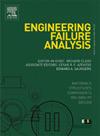乳化液泵传动系统的油搅拌及功率损耗的数值与实验研究
IF 4.4
2区 工程技术
Q1 ENGINEERING, MECHANICAL
引用次数: 0
摘要
乳化液泵传动系统的安全性对曲轴尤为重要。齿轮系统在油搅拌过程中的扭振是导致曲轴疲劳失效的关键因素之一,但容易被忽视。由于传动系统的复杂性和流场状态的不可预测性,传统的搅拌特性分析存在明显的局限性。基于多体动力学(MBD)和运动粒子半隐式(MPS)方法,创新性地提出了Co-MBD-MPS模型来研究传动系统的搅拌特性和功率损耗。对Co-MBD-MPS模型进行了实验验证,实验结果与模拟结果的差异分别为4.5%和6.4%。考虑多种参数的影响,对传动系统的润滑特性和功率损失进行了研究。在此基础上,提出了齿轮系功率损耗波动的预测模型。结果表明,多参数传动系统的油搅拌特性得到协调,润滑可靠性得到提高。在一定范围内,功率损耗和波动随喷油高度、转速和油温的增加而单调增加。最佳回油率的工作范围为喷油高度为-80 mm,转速为902 ~ 1203 r/min,油温为40 ~ 50℃,扭矩为340 ~ 485 N·m。研究结果为避免曲轴故障提供了见解和指导。本文章由计算机程序翻译,如有差异,请以英文原文为准。
Numerical and experimental studies on the oil churning and power loss of the transmission system for emulsion pump
The safety of the transmission system of the emulsion pump is particularly important for the crankshaft. The torsional vibration of the gear system during oil churning is easily overlooked, which is one of the key factors leading to crankshaft fatigue failure. Due to the complexity of the transmission system and the unpredictability of the flow field state, the conventional analysis of churning characteristics has significant limitations. Based on the multi-body dynamics (MBD) and the moving particle semi-implicit (MPS) method, this paper innovatively proposes a Co-MBD-MPS model to study the churning characteristics and power loss of the transmission system. The Co-MBD-MPS model is experimentally validated, and the discrepancies between experiments and simulations are 4.5 % and 6.4 % respectively. Considering the effects of multiple parameters, the lubrication characteristics and power loss of the transmission system are investigated. Moreover, a prediction model of power loss fluctuation of the gear train is proposed. The results show that the oil churning characteristics of the transmission system with multiple parameters are coordinated and the lubrication reliability is improved. In a certain range, the power loss and fluctuation are monotonically increasing with the oil injection height, rotational speed, and oil temperature. Furthermore, the working range of the best return rate is the height of oil injection of –80 mm, the rotational speed of 902–1203 r/min, the temperature of the oil of 40–50 ℃, the torque of 340–485 N·m. The findings offer insights and guidelines for avoiding crankshaft failure.
求助全文
通过发布文献求助,成功后即可免费获取论文全文。
去求助
来源期刊

Engineering Failure Analysis
工程技术-材料科学:表征与测试
CiteScore
7.70
自引率
20.00%
发文量
956
审稿时长
47 days
期刊介绍:
Engineering Failure Analysis publishes research papers describing the analysis of engineering failures and related studies.
Papers relating to the structure, properties and behaviour of engineering materials are encouraged, particularly those which also involve the detailed application of materials parameters to problems in engineering structures, components and design. In addition to the area of materials engineering, the interacting fields of mechanical, manufacturing, aeronautical, civil, chemical, corrosion and design engineering are considered relevant. Activity should be directed at analysing engineering failures and carrying out research to help reduce the incidences of failures and to extend the operating horizons of engineering materials.
Emphasis is placed on the mechanical properties of materials and their behaviour when influenced by structure, process and environment. Metallic, polymeric, ceramic and natural materials are all included and the application of these materials to real engineering situations should be emphasised. The use of a case-study based approach is also encouraged.
Engineering Failure Analysis provides essential reference material and critical feedback into the design process thereby contributing to the prevention of engineering failures in the future. All submissions will be subject to peer review from leading experts in the field.
 求助内容:
求助内容: 应助结果提醒方式:
应助结果提醒方式:


